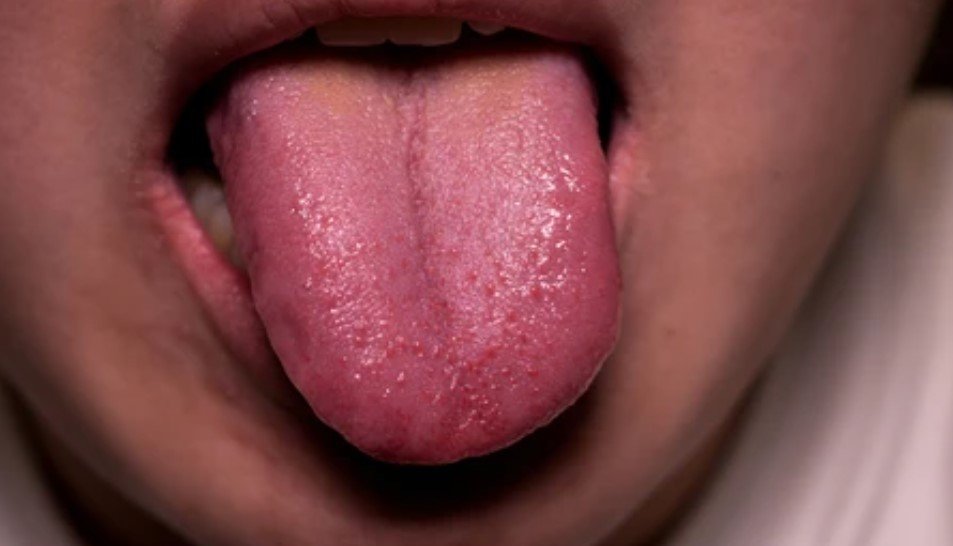Health
How Taste Buds Work: Tongue Map, Sensitivity, and Regeneration

Taste is one of the five main senses and plays a major role in how we experience food. When you eat something sweet, salty, sour, bitter, or umami, your brain receives signals from your taste buds. These signals help you identify flavours and make decisions about what you enjoy or dislike. But have you ever wondered how taste buds actually work? Where are they located? Why are some parts of the tongue more sensitive than others? And how often do taste buds regenerate?
This article will explain the entire process of taste, how the tongue map functions, where different types of taste receptors are located, and how regeneration keeps your sense of taste active. If you want a clear and complete understanding of how your tongue detects different tastes, this guide is for you.
What Are Taste Buds?
Taste buds are small sensory organs that help you detect taste. Each taste bud contains 50 to 100 taste receptor cells. These cells are activated when you eat or drink something. They respond to chemicals in your food and send messages to your brain. This is how you recognize flavours like sweet or bitter.
Taste buds are found on the tongue, the roof of the mouth, the throat, and even the esophagus. However, most of them are located on the tongue, making it the primary organ for taste.
Taste Buds Location
You can find taste buds in different areas of the tongue. They are grouped into small structures called papillae. There are four types of papillae on the tongue: fungiform, foliate, circumvallate, and filiform. Fungiform papillae are located on the tip and sides of the tongue. Foliate papillae are on the sides near the back. Circumvallate papillae are found at the back of the tongue in a V-shaped pattern. Filiform papillae cover the rest of the tongue but do not contain taste buds; they are responsible for the texture and sensation.
This arrangement helps the tongue detect taste from all directions. Though some parts are more sensitive to certain tastes, every section of the tongue can detect all five basic tastes to some degree.

Understanding the Tongue Map
Many people believe in a tongue map that divides the tongue into separate zones for each taste: sweet at the tip, salty at the sides, sour farther back on the sides, and bitter at the back. While this idea became popular in the early 1900s, modern science has proven that it is not completely accurate.
All areas of the tongue can detect all five tastes: sweet, salty, sour, bitter, and umami. However, certain areas have more receptors for a specific taste, making them more responsive. The tongue map is a simplified way of showing taste sensitivity, but real taste detection is more complex and distributed.

What Do You Taste With the Tip of Your Tongue?
The tip of your tongue is very sensitive and has many taste buds. It is especially good at detecting sweet and salty flavours. When you eat a sugary snack, the first part of your tongue to respond is usually the tip. This helps your brain recognize sweetness quickly and enjoy it. The front of the tongue also helps detect subtle flavours, which is why tasting something lightly flavoured often begins at the tip.
So, to answer the common question: what do you taste with the tip of your tongue? The tip is especially sensitive to sweet and salty tastes, but it can also detect sour, bitter, and umami.
What Do You Taste With the Side of Your Tongue?
The sides of the tongue contain foliate and fungiform papillae, which include taste buds. These areas are very good at picking up sour and salty tastes. The sides play an important role when tasting citrus fruits or salty snacks.
If you place a sour candy on the side of your tongue, you might feel a stronger reaction than if you place it on the middle. That is because the receptors there are more responsive to sourness. So, to clearly explain what you taste with the side of your tongue, it is mostly sour and salty tastes, though all five tastes can still be detected.
What Part of the Tongue Is Most Sensitive to Bitterness?
Bitterness is an important taste because it often signals the presence of harmful or toxic substances. The back of the tongue, where the circumvallate papillae are located, has more receptors that detect bitter compounds. This area sends strong signals to the brain when something bitter is consumed.
So, if you’re wondering what part of the tongue is most sensitive to bitterness, the correct answer is the back of the tongue. It helps prevent swallowing substances that may be harmful.
Taste Buds Sensitive to Bitter
Some people have more sensitivity to bitter tastes due to genetic factors. These individuals have more taste buds or stronger bitter receptors. This condition is often called “supertasting.” People who are more sensitive to bitterness may dislike certain vegetables like broccoli, kale, or Brussels sprouts because they taste too strong.
Taste buds sensitive to bitter can influence food preferences and even dietary choices. If you dislike bitter foods, it may not be a personal preference—it could be a biological response.

What About Umami?
Umami is the most recently recognized basic taste. It describes the savoury flavour found in foods like meat, cheese, and soy sauce. Umami taste buds are spread out across the tongue, especially in areas where sweet and salty are also detected. It is harder to notice but plays a key role in making food taste rich and satisfying.
How Often Do Taste Buds Regenerate?
Taste buds do not last forever. They go through a life cycle that includes growth, activity, and replacement. On average, taste buds regenerate every 10 to 14 days. This helps maintain the sense of taste even after exposure to hot foods, illness, or injury.
So, if you’re asking how often do taste buds regenerate, the answer is around once every two weeks. This process is essential to keep your sense of taste working properly over time.
How Fast Does a Human Taste Bud Regenerate?
Once a taste bud is damaged or wears out, it is replaced with a new one through a natural repair process. How fast does a human taste bud regenerate depends on health, age, and lifestyle. In healthy people, a taste bud regenerates in 10 to 14 days. If someone is sick, smokes, or has a poor diet, this process may be slower.
Fast regeneration is important because taste buds are exposed to temperature changes, spicy foods, and bacteria. If they did not regenerate, we could lose our sense of taste easily.
Factors That Affect Your Sense of Taste
Many things can affect how well your taste buds work. Some of these include:
- Age: As people get older, the number of taste buds decreases, and their sensitivity reduces. This is why older adults may prefer stronger flavours.
- Smoking: Smoking damages taste buds and slows down their regeneration. It can dull the sense of taste over time.
- Health Conditions: Illnesses like colds, infections, and sinus problems can block taste signals. Certain medical treatments, such as chemotherapy, also affect taste.
- Medication: Some medicines can cause dry mouth or alter taste perception. Always talk to your doctor if you notice a change in taste while taking medication.
- Oral Hygiene: Poor dental hygiene can lead to infections and bad taste perception. Brushing your tongue and keeping your mouth clean helps taste buds stay healthy.

Ways to Keep Taste Buds Healthy
You can maintain good taste bud health by following simple steps:
- Eat a balanced diet rich in vitamins and minerals
- Avoid smoking and limit alcohol
- Stay hydrated to prevent dry mouth
- Practice good oral hygiene
- See a doctor if you notice changes in taste that last a long time
The Role of the Brain in Taste
Taste buds send information to the brain through nerves. The brain then processes these signals and helps you identify what you are eating. The brain also connects taste with smell, texture, and temperature. That is why a blocked nose can reduce your ability to taste properly.
The main parts of the brain involved in taste are the brainstem and the gustatory cortex. These areas help you enjoy food and detect changes in flavour. The brain also helps form food memories, such as remembering the taste of your favourite meal.
Conclusion
Your taste buds are more than just tiny spots on your tongue. They are part of a detailed and active system that helps you enjoy food and stay safe. From identifying bitter compounds to detecting sweet and savoury flavours, taste buds help your brain make quick and accurate decisions.
Understanding the taste buds location and their role in sensing different tastes helps us appreciate the science behind eating. Whether you’re wondering what you taste with the side of your tongue, what do you taste with the tip of your tongue, or how your taste buds regenerate, the answers show how complex and well-organized our sense of taste really is.
By taking care of your tongue and understanding how taste buds work, you can continue to enjoy the full range of flavours in your food for many years.
-

 Tech2 months ago
Tech2 months agoSora 2 Invite Code: How to Get One (Step-by-Step Guide)
-

 Social Media2 months ago
Social Media2 months agoWhat the “67” TikTok Meme Really Means
-

 Business2 months ago
Business2 months agoDubai Freezone Company Formation: From Name Reservation to Bank Account
-

 Tech2 months ago
Tech2 months agoWhat To Do When Your Business Faces Network Vulnerabilities






